Angus Carlyle’s despatches from Okinawa
Angus is currently in Okinawa working on Zawawa, a long-term collaboration with an anthropologist, a media artist and an acoustic scientist. Generously he will be sharing a few words with ITO whilst he’s there, in his now familiar self constrained 100 word limit, along with the occasional image, and not always related to the Okinawa project.
Despatch 1 – 9th January 2017, Okinawa
The clouds turn this slow descent into a way of beginning: here soft peaks required by recipes, there twists of cotton trailed by puffs of shadow; earlier wind-sculpted snow fields that invited my weight and later suspended detonations that first offered themselves at a distance but now form the billowing medium through which we lurch and rattle until everything opens abruptly onto whitecaps and wakes, onto shuttered glimpses of reef, shallows, stripes of sand, jungle, roofs, roads and fields until skidding, swerving tires jolt me out of the sense of a world below into a sense of the world around.
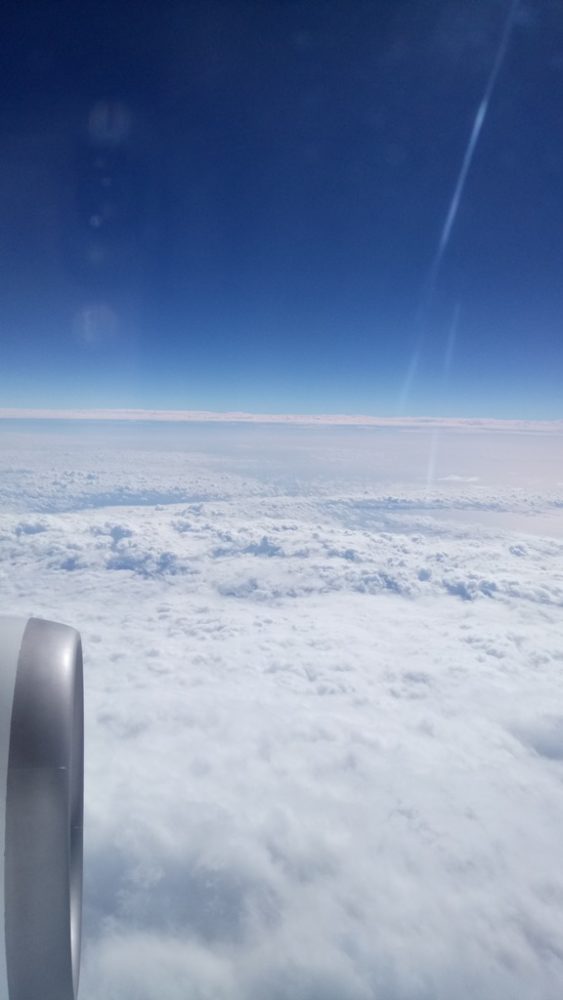
Despatch 2 – 11th January 2017, Okinawa
Our neighbourhood’s narrow streets let the city to settle into a quiet night: subdued insect pulses, footfalls keeping pace with the rub of trousers, the clicks of a dog’s nails, a lighter’s scrape, doors complaining about their slide along tight frames, a broom pushing grit over pavement, food prepared by wood, china and metal, children’s laughter, washing twisting against lines, the skitter of dry leaves, my mouth garbling an evening’s greeting. Many times and many places have found me trying to set down just such an atmosphere as this, trying to record it. I have never come close to close.
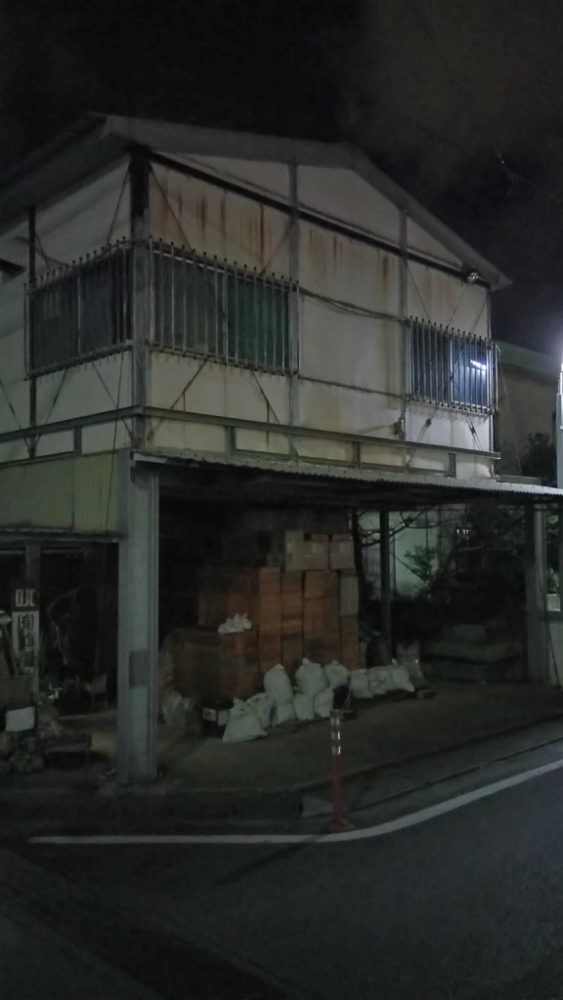
Despatch 3 – 13th January 2017, Okinawa
Crouching behind our concrete balcony, I could only hear the neighbourhood weave itself an early morning. Doors squealed open again, wind sent another crisp winter leaf into somersaults, broom bristles bent once more to scatter stones, children’s softer voices tramped laden schoolbags. From high and low, air forced from tiny lungs through tinier bronchial tubes left quivering beaks in sweeping song. This delicately woven scene is ripped into unpitying shreds by the rumbling, whining, roaring USAF F-15s that screech seaward then score the sky in figures of 8. The atmosphere settles back and then comes the tearing: repeat, repeat, repeat.
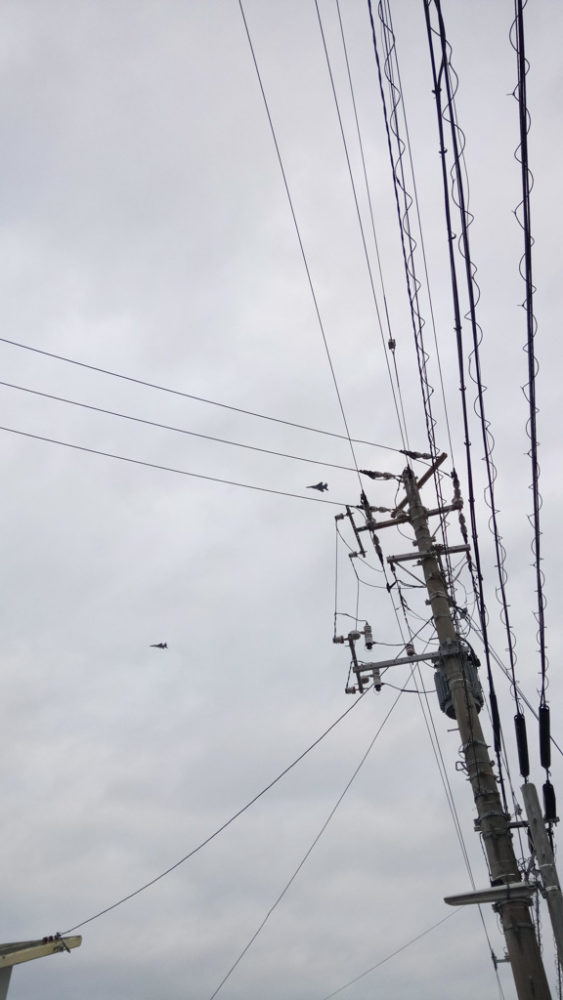
Despatch 4 – 18th January 2017, Okinawa
A blue curtain hangs over a doorway a few steps from a lively dual carriageway curving under Naha’s monorail. Part the curtain, with its circular white logo, slide the door and enter the trim workshop where they craft sanshin, the three-stringed instrument that lends its colour to Okinawan music, heard as much from passing cars, café radios and nightclubs as more staged ceremonies. Cross-legged, barefoot, patient, intent, and generous to us, the craftsman stretches the snakeskin, hammers in wedges until its tautness resonates, saws along guidelines chalked on the sanshin’s neck and chisels its fretboard, pinging splinters off my microphone.
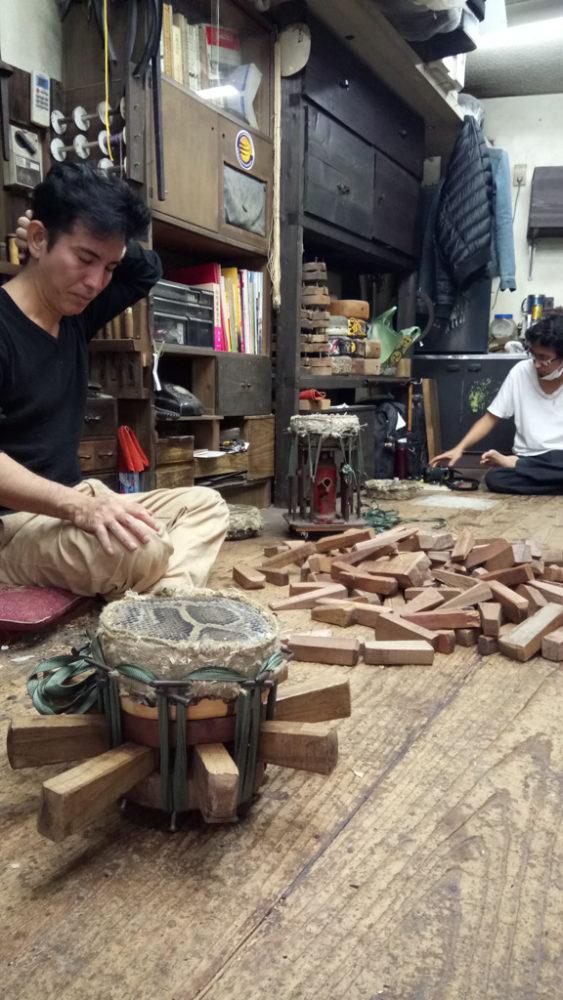
Despatch 5 – 19th January 2017, Okinawa
Seventy years ago, this was shelter from the US naval bombardment’s Typhoon of Steel, the horrors of which were recounted by Yogi-San, then a teenager, now a village elder well known to my companions. Four dry days and the electric lights in the cave beneath Sunabe do not glitter the cold falling drips of when we last climbed down. Left to my own devices in these limestone hollows, I have no ringing percolations but shrines and offerings, marbled smoothnesses and jagged protrusions, shadows and brightness. Dead coral crackles underfoot until I stand stock still, nostrils inhaling, ears absorbing, eyes smarting.
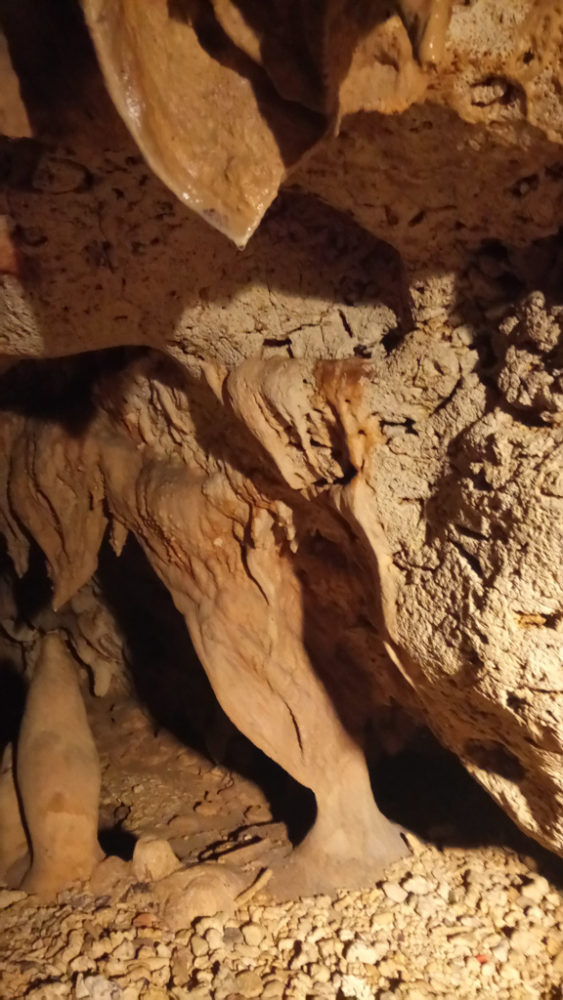
Despatch 6 – 20th January 2017, Okinawa
For my friends, content and context walk hand in hand. Contexts calibrate content, connect the heard world to a historical scale, weigh the balance between singularity and commonality, let detail be listened for and listened to. Much of this trip involves extending context through interviews and archive visits. Last night we talked to a local ethnographer who has spent forty five years exploring the island’s sacred life. “You cannot record without understanding” he said of the very same ceremonies where I jumped out of a car, connected cables as I walked bewildered, sweeping my microphone in search what sounded good.
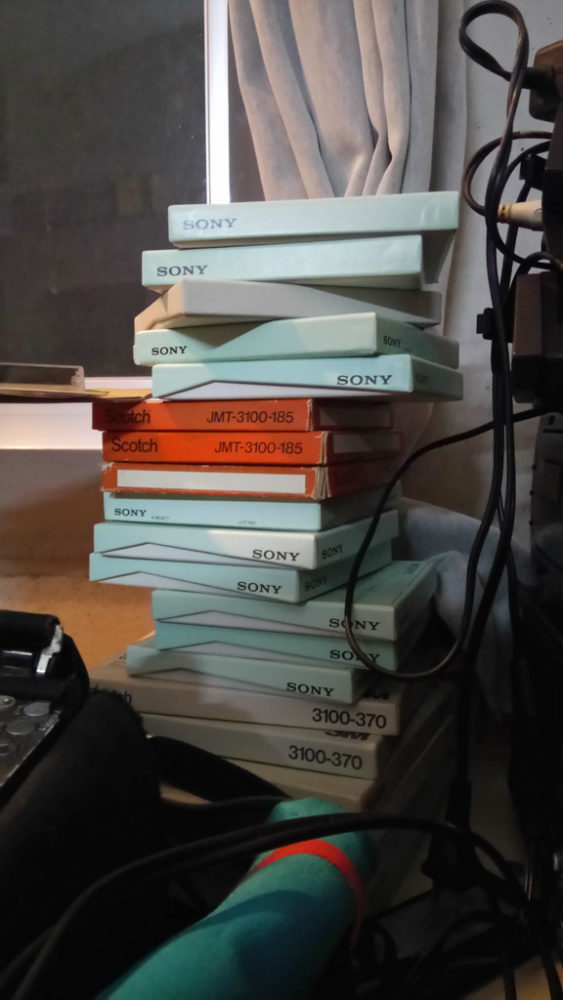
Despatch 7 – 21st January 2017, Okinawa
My kind of haunt: swaying red lantern, wood-panelled walls decorated with Ishigaki World Triathlon posters, cigarette-scented air, laughter chimes with the clash of toasts (thick schooners for beer, shorter glasses bobbing with ice for awamori), vegetarian food comprising whatever delicious morsels I can pull out from under glistening pigs trotters or crisp-fried bacon. A sanshin is delivered in its own taxi, is plucked by a friend of a friend and leads us first to an improvised dance floor and then out into the whirl of night streets, gibberish in my notebook and a hangover that took two days to lift.
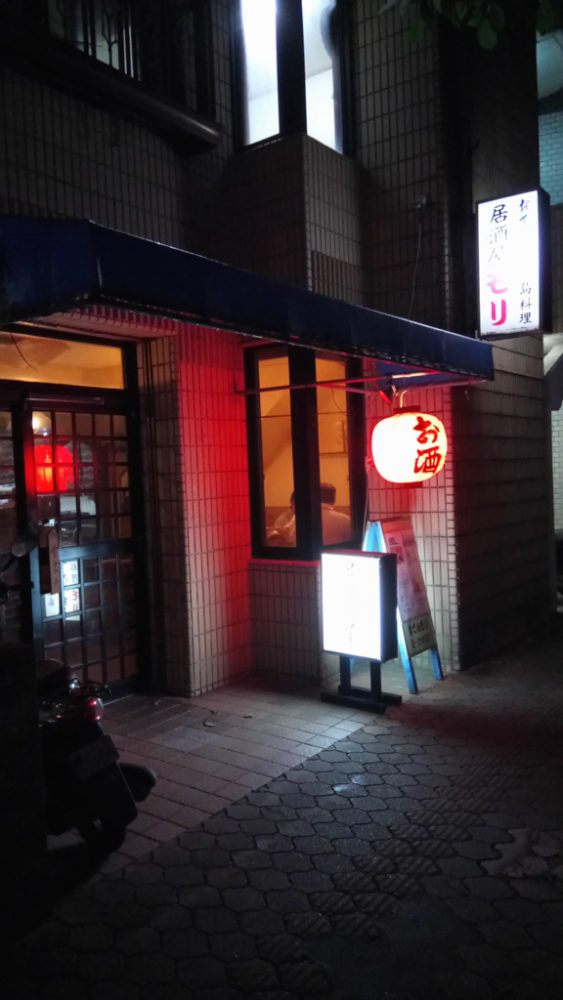
Despatch 8 – 23rd January 2017, Okinawa
A scene that holds the eyes might give little to the ears. The cane fields offer their beauty both to vivid sun and to duller light; plantlets that rise to stalks that crown with feathery seed heads take on greens then browns to set off soil and sky. When the wind blows – as faintest breath or buffeting gust – what had visual allure can claim acoustic attention, one rendered onomatopoeically in local dialect as “Zawawa,” a word that appears in the songbooks that share nightclub stages with performers. And then come the farmers with blades to sound the scene some more.
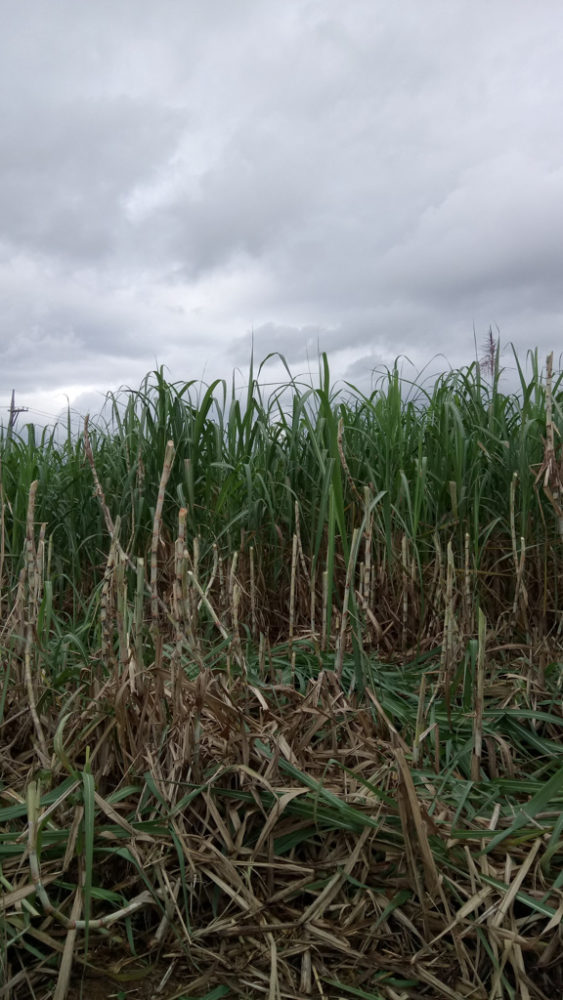
Despatch 9 – 25th January 2017, Okinawa
Sometimes spaces cling to inertness, refusing to unfold into sound. More gallingly, spaces can make themselves heard against my plans for them. Two charged sites: the southern cliff tops where thousands after thousands of Japanese and American soldiers were swept brutally to the winds, now a landscaped memorial; and, further round the coast, the sefa utaki where stone-stepped paths join six sacred sanctuaries and part dense foliage for views out to where the Gods came down. For the first site, mechanical leaf blowers and tourist laughter. For the second, no anticipated dripping jungle stillness but camera shutters and shuffling cagoules.
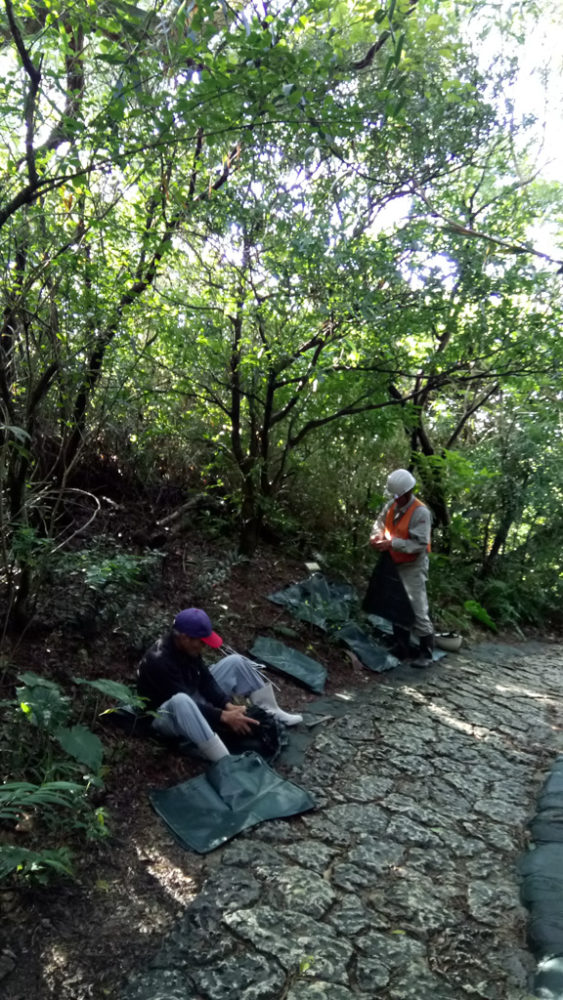
Despatch 10 – 28th January 2017, Okinawa (The final despatch)
Yesterday the tiredness that made my eyeballs sticky conspired with the anxiety that gave my armpits a stale tang (almost a taste) to distract me from the record button: I let slip the vibrations of a lovely market shifting from a day selling produce into a night of drink and friendship. Foul-tempered this morning as a result and feeling superstitious, I had no desire to connect a microphone or even leave my room. Once outside, we ended this trip together listening without recording (deliberately this time), trusting ourselves to remember the weaver who inspired us with her memories of sound.
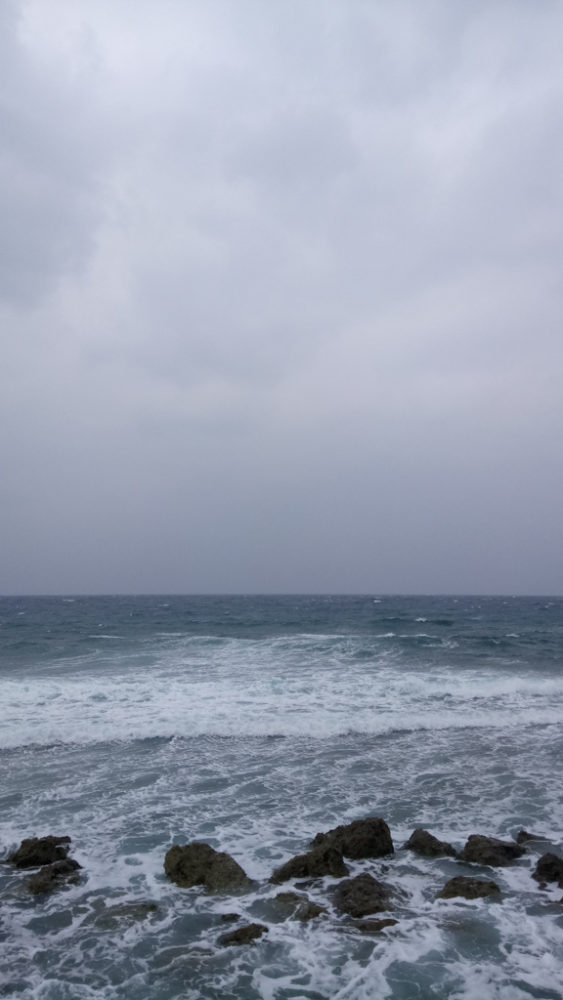
About Angus Carlyle
Angus Carlyle shifts between writing, collaborating on experimental films and working with sound (particularly field recording). His last three projects were the installation A Crossing Bell (Estuary Festival, Tilbury & Today Art Museum, Beijing), the album In The Shadow of the Silent Mountain (Gruenrekroder) and the book A Downland Index (uniformbooks).
You can read and view more of Angus’s work on his website: www.anguscarlyle.com
You will also find him on Twitter: twitter.com/anguscarlyle
Unless otherwise stated, all words and images in this article are © Angus Carlyle
